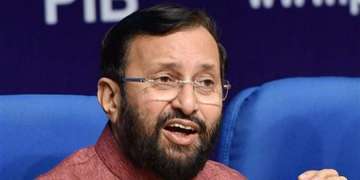In order to ensure that anganwadis and play schools are "inviting and inspiring" places to learn and spend time, an HRD Ministry panel has suggested roping in early childhood education experts, artists and architects to design the spaces.
The panel led by former ISRO chief K Kasturirangan has recommended in the draft for the new National Education Policy (NEP) that a committee be set up for the purpose.
"Anganwadis, pre-schools, and primary schools should all have high quality physical infrastructure that is conducive to learning," the panel report said.
"A committee of cognitive scientists, early childhood education experts, artists, and architects will be formed in each state (or locality) to design spaces, within the funding allocations, that are truly inviting and inspiring places to spend time and learn," it added.
"The physical environments for early childhood education will be welcoming and stimulating with accessible infrastructure, drinking water, and the toilets will be safe, clean, and brightly lit," it said further.
"The classrooms will allow flexible seating arrangements; learning materials will be safe, stimulating, developmentally appropriate, low cost, and preferably created using environmentally-friendly and locally-sourced materials," it added.
The panel has suggested that while the teachers and educators will be involved in the selection and development of learning materials, children could also participate.
"Some examples of learning materials are picture cards, puzzles, dominoes, picture story books, blocks, simple musical instruments, number towers and rods, puppets, materials for arts and crafts, and colouring books," it said.
"Posters, graphics, and art containing alphabets, words, numbers, shapes and colours will be placed on walls at the eye levels of children for high quality stimulation and engagement," it added.
Latest India News
